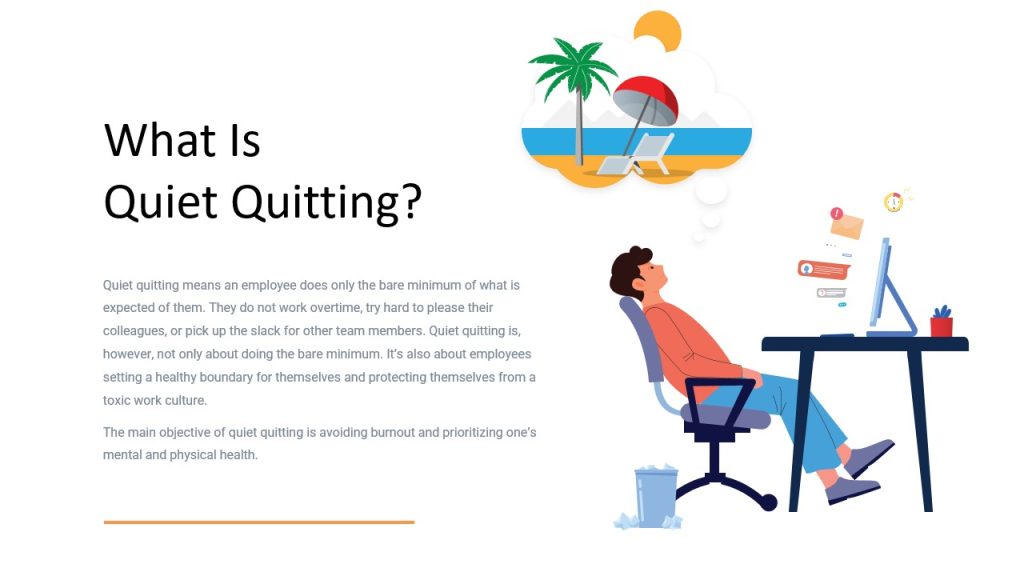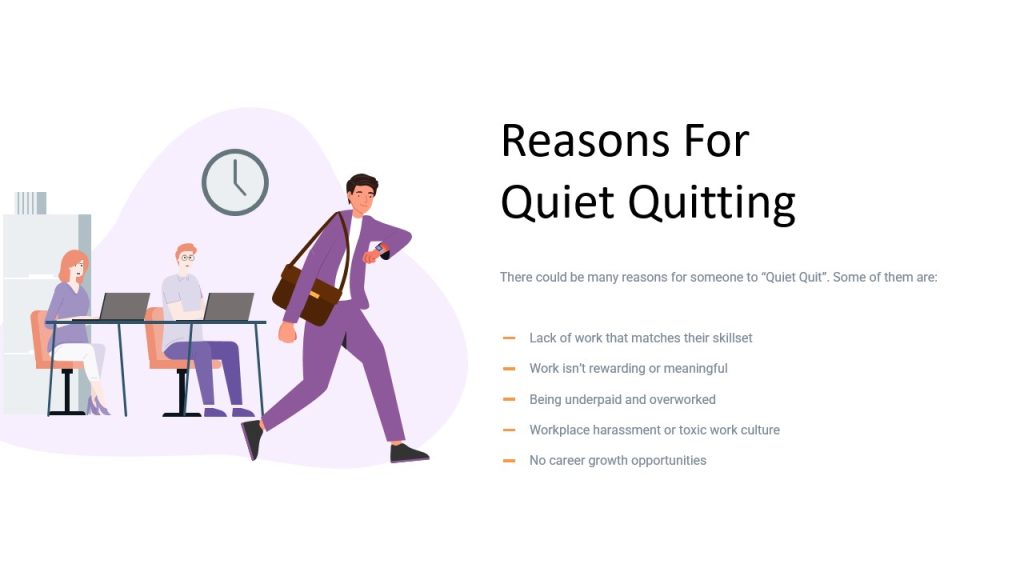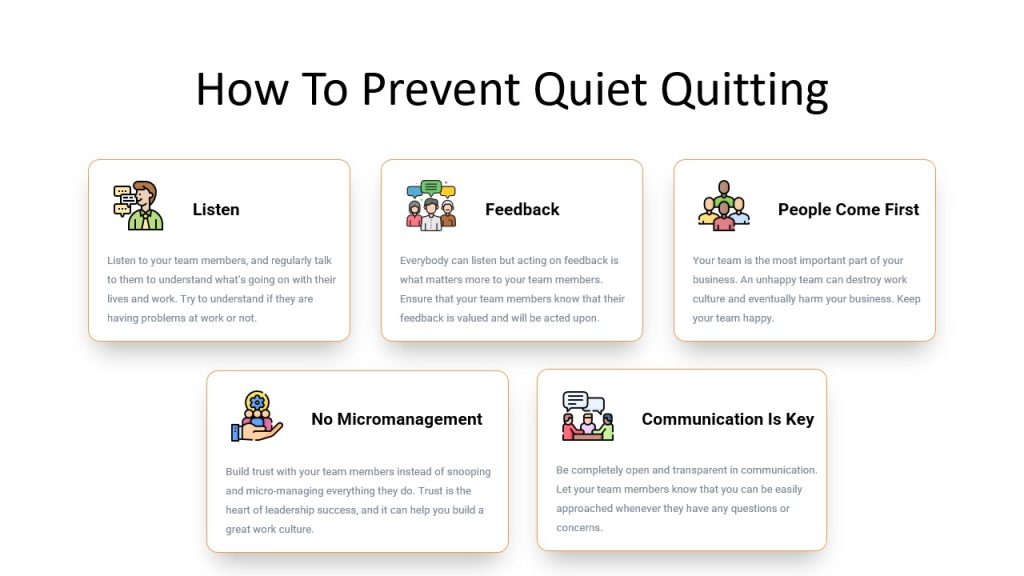Quiet Quitting Explained

If you haven’t been living under a rock for the past few weeks, you must have come across the term “quiet quitting”.
There’s quite a lot of buzz around it. Thousands of people on TikTok and LinkedIn are actively talking about quiet quitting. But what exactly is it? Is it really all that bad? How do you know if your employees are quiet quitting? How do you prevent them from doing that?
Check out these free-to-download slides to know all about quiet quitting. Keep reading to know more:
What is quiet quitting?
Quit quitting means an employee does only the bare minimum of what is expected of them. They do not work overtime, try hard to please their colleagues, or pick up the slack for other team members.
It is, however, not only about doing the bare minimum. It’s also about setting a healthy boundary for themselves and protecting themselves from a toxic work culture.
The main objective is avoiding burnout and prioritizing one’s mental and physical health.
Reasons for quiet quitting
People who quiet quit are generally unhappy with their work or work environment. There could be many reasons for someone to quiet quit. Some of them are:
- Lack of work that matches their skillset
- Work isn’t rewarding or meaningful
- Being underpaid and overworked
- Workplace harassment or toxic work culture
- No career growth opportunities
How to prevent quiet quitting
If you think there are issues at your workplace that are causing employees to quiet quit, there are a few things you can do to prevent that. Being a good listener, welcoming feedback, and being approachable are all great ways to prevent quiet quitting.
Generally, people do not resort to quiet quitting straight away. It’s mostly something they do when all else fails. A disgruntled employee will only resort to quiet quitting if they know that their boss is unreachable or difficult to communicate with.
Here are some actionable tips to prevent quiet quitting in your workplace:
Listen
Listen to your team members, and regularly talk to them to understand what’s going on with their lives and work. Try to understand if they are having problems at work or not.
Feedback
Everybody can listen but acting on feedback is what matters more to your team members. Ensure that your team members know that their feedback is valued and shall be acted upon.
People come first
Your team is the most important part of your business. An unhappy team can destroy work culture and eventually harm your business. Keep your team happy.
No micromanagement
Build trust with your team members instead of snooping and micro-managing everything they do. Trust is the heart of leadership success, and it can help you build a great work culture.
Communication is key
Be completely open and transparent in communication. Let your team members know that you can be easily approached whenever they have any questions or concerns.
If you want your employees to go the extra mile for your company, start by providing them:
- Meaningful and productive work.
- Better compensation.
- An improved work environment.
- Respect for their personal time.
Conclusion
There you have it, a simple explanation of what quiet quitting is, the signs you need to look out for, and how you can prevent it in the workplace. We hope this article helps you to create a better working environment for your colleagues and prevent burnout at work.



